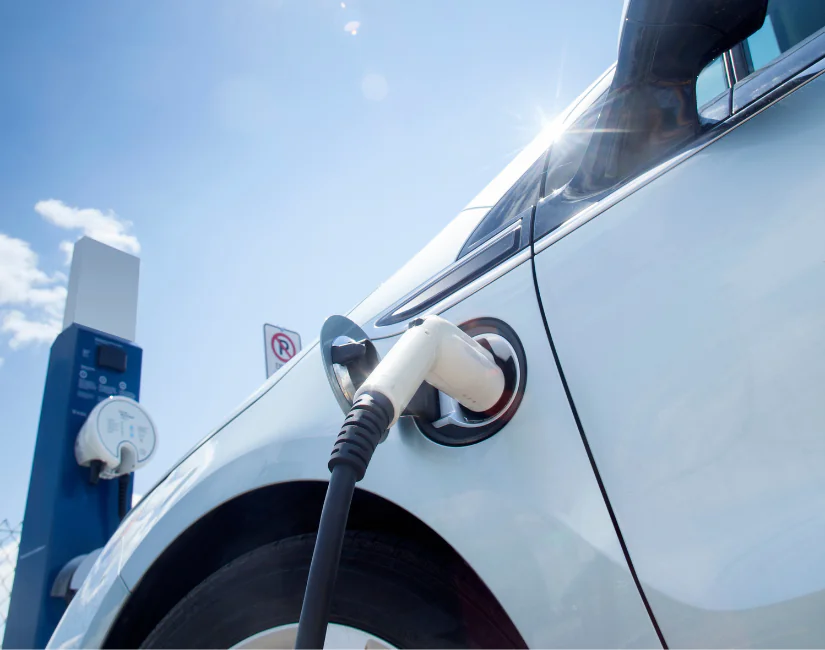Gasoline prices haven’t been consistently under $2.00 a gallon since 2004. That’s nearly 20 years of increasing prices at the pumps for all grades of fuels, from regular to premium and diesel. According to AAA, the highest recorded average gas price hit in June 2022 at more than $5.00 per gallon.
Rising gas prices are just one aspect that has driven motorists, commercial companies, and government agencies to consider more economical alternatives. Electric vehicle (EV) technology is showing promise as an alternative to gas engines, however, the replacement of conventional vehicles with EVs is still the subject of much debate.
In September 2022, the Department of Homeland Security (DHS) was the first federal agency to debut a fully electric vehicle (EV) in service for law enforcement. The Ford Mustang Mach-E was the first in a range of electric vehicles that DHS plans to use for various law enforcement functions.
John Tien, Deputy Secretary of Homeland Security stated, “DHS is leading the charge among federal agencies to transition its fleet vehicles from internal combustion engines to zero-emission electric vehicles.”
Pros of EVs for Law Enforcement Agencies
As indicated, one of the biggest pros of utilizing an electric vehicle versus a gas-powered one is the cost of fuel. While lawmakers may work to facilitate a reduction in costs at the gas pumps, it’s less than likely we’ll see a significant decrease any time soon. The increase in gas costs has led some law enforcement agencies to place caps on mileage per shift, encourage more bike and foot patrols, and employ alternative call-management strategies.
The top pros of using electric vehicles for law enforcement include:
- Savings on fuel and maintenance costs
- Potential long-term benefits for the environment
- High safety ratings for front and side impacts and rollover incidents
- Quick acceleration for high-speed pursuits
The Bargersville, Indiana Police Department has been using Tesla EVs as patrol cars since 2019. Bargersville Police Chief Todd Bertram says, “Our EV can go from zero to 60 in 5.2 seconds, and the top speed is 140 mph. Even if we’re chasing somebody going 100 miles mph, we’re going to catch them, and it’s likely to be a shorter pursuit because we’re so much faster.”
Cons of EVs for Law Enforcement Agencies
The cons of electric vehicles for law enforcement agencies vary but include:
- Upfront costs can have budgetary effects
- Some EVs may not allow the vehicle to be in motion without its lights, which can be an issue when officers need to move unseen.
- EVs have a lower mileage range that needs to be factored in for shifts and area coverage.
- Charging time for EVs can affect scheduling and how shifts are conducted.
Charging time is often the most common con talked about when adding EVs to any law enforcement agency. It can take from about 30 minutes to two hours to fully charge a vehicle. The need for a charge after a certain number of miles plus the length of charging time may be considered a con for some law enforcement agencies when integrating EVs into their fleet. However, if an agency has the budget for excess EVs, they are able to supply their active patrol officers with an EV while another EV is charging.
Wireless Products that Pair with Electric Vehicles
It’s essential for law enforcement agencies to have the right products when making the move to electric vehicles and beyond. Look to Kustom Signals for products like the Eagle 3, the first RADAR with an easy way to independently verify the Doppler speed without needing an electrical connection to any patrol vehicle. It features a patented Wireless Speed Sensing with integrated antenna and it offers both front and rear scan mode.
The Eagle 3 is also the smallest moving Doppler RADAR currently on the market and it is the first to have an electronic tuning fork in the remote control. The Eagle 3 is ideal for electric vehicles because it doesn’t need a wired interface with the patrol vehicle, including the controversial use of the OBD II port.
Kustom Signals’ Wireless Speed Sense Module is also a great RADAR tool for electric vehicles. The Wireless VSS module can upgrade any older/existing Kustom Signals moving RADAR. Its little module can plug into an old RADAR so you can receive all the Wireless VSS benefits. Additionally, our patented TruTrak® adds extra features including:
- Quickly display patrol and target speeds when exiting HOLD
- Enables Automatic Mode Switching
- Eliminates RADAR anomalies like Shadowing, Batching, and Combining
A big advantage of WVSS is that it helps installers by significantly reducing installation time. This means major time and cost savings when multiplied by hundreds of EVs in a fleet. While the pros and cons of using electric vehicles for law enforcement agencies are still being debated, several municipalities are finding success with EVs. Whether your department opts for EVs or not, you can rely on Kustom Signals for the reliable, cutting-edge products that you need and want. Contact us today, and we can answer your questions so you can make the right selections.

